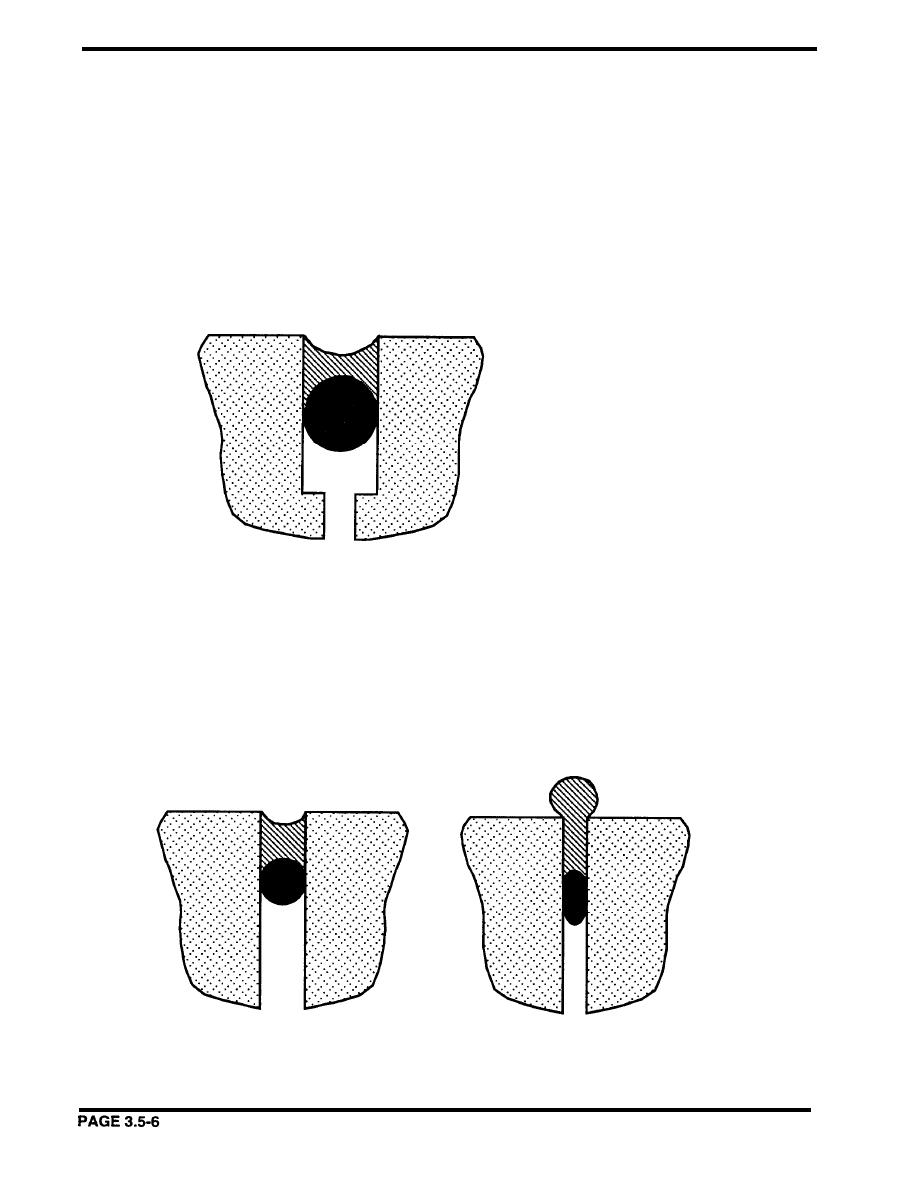
DESIGN/SEALANTS
The geometry of a sealant joint determines its cohesive and adhesive strength. A concave, or
hourglass, shape is widely recognized as optimal for sealant beads, with a width to depth ratio of
about 2. The desired shape is achieved through the use of a backer rod and the proper tooling of
the exposed side of the sealant. Figure 3.5.1 shows an example of a properly designed sealant
joint from Schroeder and Hovis in ASTM STP 1069. The joint is wide enough to accommodate
movement, and is sawed deep enough to allow placement of the backer rod and sealant. A proper
backer rod is used and installed, and the sealant is tooled 6 mm (l/4 inch) below the surface. A
properly shaped bead will deform under expansion such that most of the strain will occur in the
central portion of the bead where the cohesive strength is good.
ACCEPTABLE
Wide enough to
l
accommodate movement
Sawed deep enough for
l
backer rod placement
Proper backer rod
l
Sealant tooled 6 mm
l
(1/4 inch) below surface
Figure 3.5.1 Good Joint Design (Schroeder and Hovis)
If the joint width is too narrow, the sealant will be forced out of the joint when the joint is under
compression as seen in Figure 3.5.2 (based on Warseck in ASTM STP 1069). When the building
contracts, the extruded sealant is no longer in the joint, resulting in leaks. 6 mm (1/4 inch) has been
suggested as a minimum joint width. On the other hand, if the joint is too wide, sealant may sag out
of the joint. In addition, in order to maintain a 2 to 1 width-to-depth ratio in a wide joint, a deep
sealant bead is required, and such a deep bead is less capable of stretching.
UNACCEPTABLE
Joint at mean temperature
Joint under compression
Figure 3.5.2 Sealant Extrusion in Narrow Joint (Warseck)



 Previous Page
Previous Page
